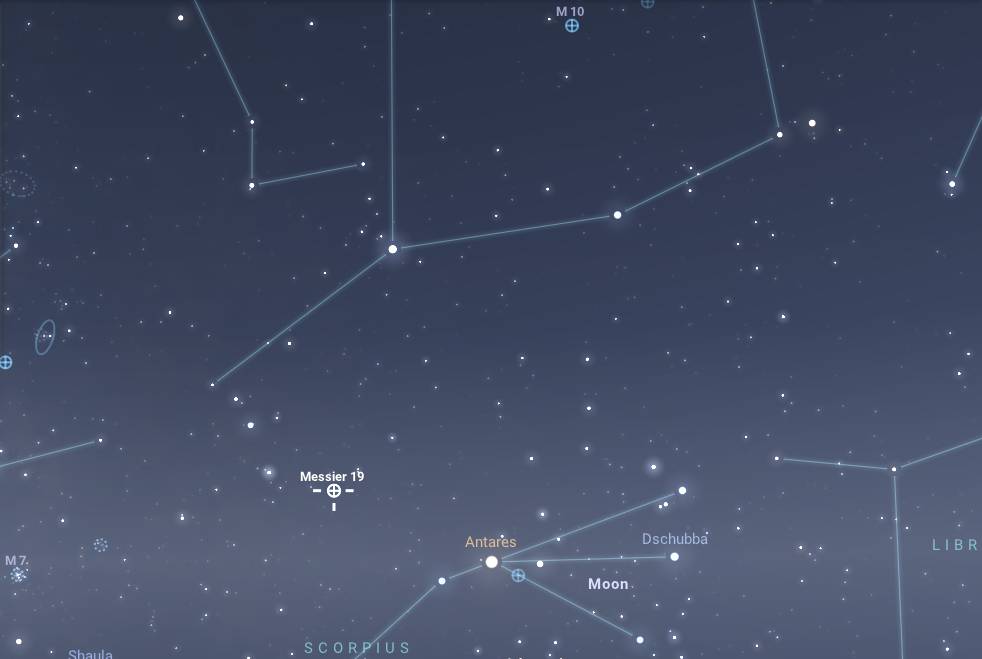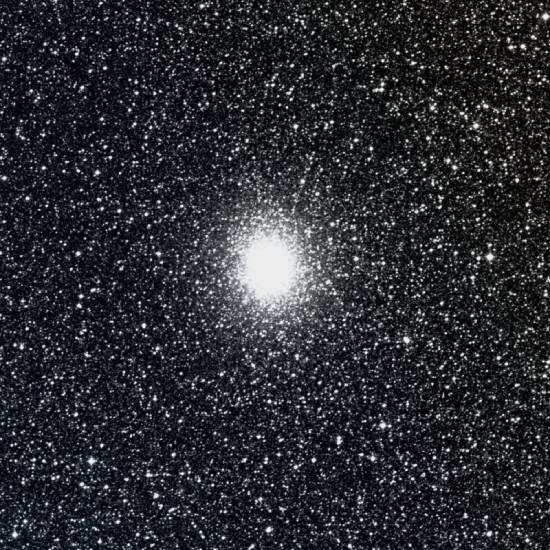Messier 19 (M19) is a globular star cluster located in the constellation Ophiuchus, known as the Serpent Bearer. The distance to M19 is estimated to be around 28,700 light-years from Earth.
M19 was discovered by French astronomer Charles Messier on June 5, 1764. He catalogued it as the 19th object in his list of non-cometary celestial objects. Here are some key details about M19:
Composition
Globular clusters, such as Messier 19 (M19), are tightly packed groups of stars that orbit around the core of our Milky Way galaxy. They are among the oldest objects in the universe and contain some of the earliest stars that formed after the Big Bang. M19 serves as an excellent example of this stellar phenomenon.
M19 is composed of an estimated several hundred thousand to possibly over a million stars, all bound together by the force of gravity. The stars within this cluster are typically old and metal-poor, meaning they contain fewer elements heavier than hydrogen and helium. This characteristic provides insights into the early stages of star formation and the conditions present in the early universe.

The diameter of M19 is estimated to be around 150 light-years, making it one of the larger globular clusters in the Milky Way. The stars in M19 are closely packed, which contributes to the high density of stars in its core. This stellar density creates a fascinating environment where gravitational interactions can lead to various phenomena, including the potential formation of exotic objects like pulsars and binary star systems.
In summary, M19 is not just a collection of stars but a relic of the early universe, offering astronomers valuable insights into the processes that shaped our galaxy and the cosmos at large.
Observation
The apparent magnitude of M19 is approximately 7.47, which allows it to be visible with binoculars or a small telescope under optimal viewing conditions. However, it typically appears as a faint smudge in the sky, especially when compared to brighter celestial objects.
M19 is best observed from the Southern Hemisphere during the winter months, from June to August, when the constellation Ophiuchus is high in the evening sky. This placement offers excellent visibility for southern observers. In the Northern Hemisphere, M19 can also be seen from late spring through summer, particularly between May and August, though it appears lower on the horizon and may be slightly more challenging to observe.
For amateur astronomers, observing M19 can be a rewarding experience, especially when viewed through a larger telescope capable of resolving its densely packed stellar population. However, due to its relatively faint appearance, appreciating the cluster fully may require dark skies and favourable viewing conditions. With patience and the right tools, stargazers can enjoy the intricate beauty of this globular cluster.




